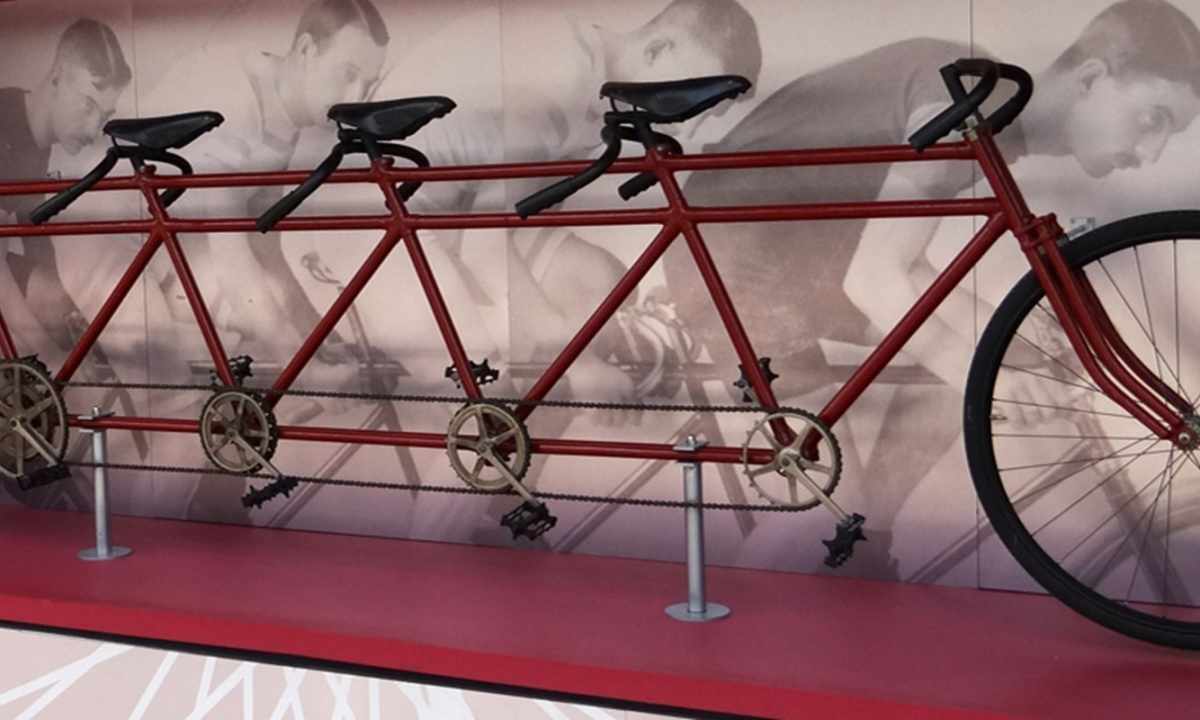On May 3 the world day of the bicycle is celebrated. Today this widespread, available and eco-friendly vehicle. From where did this two-wheeled means movement and who invented it go?
Earlier bicycles resembled not on to what we got used today. The first prototype of the bicycle can be considered the four-wheel invention of the Italian Giovanny Fontana. However this vehicle didn't become popular. The following data on bicycles are recorded only in 400 years. The shortage of horses forced to get back to the idea of the invention of the new vehicle.
In 1813 Karl von Dres presented the four-wheel device which was called "car for run". It presented the modifed invention in 5 years. It already became more prototype of the modern bicycle: two wheels, wooden frame, wheel and leather saddle. The vehicle 23 kilograms weighed. Unlike modern, the bicycle of that time had no pedals that made it similar to today's "runbike" more.
After Karl von Dres's invention, the bicycle underwent many changes. So, in the sixties the 19th ages of the wheel became steel, pedals appeared. However the bicycle was recognized as unsafe as there was no braking system. The name "bicycle" was thought up by the inventor from France Joseph Nilsefor. The bicycle received pedals in the early forties. The Scottish smith Kirkpatrick Macmillan supplied with them the invention. As a result the vehicle externally similar to the modern bicycle turned out. However it differed in driving process – pedals of the bicycle needed to be pushed.
In 1845 the engineer from Britain Thompson developed and took out the patent for the inflatable tire for wheels, and in 7 years the French inventor put pedals on the front wheel of the vehicle which needed to be twisted. The bicycle similar with modern, the master created in 1863. Mass production of this vehicle was in common started by Olivier's brothers who were industrialists and the engineer Pierre Micho. The last also thought up to replace the wooden frame with metal.
It is considered, as the name "bicycle" to the vehicle was given by the engineer. In 1969 to attract the population to the invention, on roads of France was decided to organize cycle racings. It was specified that management of the design is available to what has "strength of the elephant and agility of the monkey". Eventually the vehicle was improved, began to be made mainly of metal, on wheels dressed dense rubber, frames and hollow forks were made of tubes.
In 1879 the English inventor Hilman began to sell completely metal bicycles with high wheels. The size of the front wheel was twice more than back. Such bicycles were called as "penny farthing". They were unsafe therefore over time the invention began to be made with identical wheels not of really large diameter.
In 1884 John Kemp is the inventor from England — created new model of the bicycle which was called by Rover (the lane "tramp", "the wanderer). It is interesting that the inventor created later the Pover Company which grew huge automobile concern. The new model of the bicycle found the chain drive on the back wheel, the Cyclist began to sit between wheels which were equal on diameter. Further rovers began to be improved.
In 1888 there were inflatable tires manufactured of rubber in 1898 – brake pedals. By the beginning of the 20th century the bicycles had the mechanism of switching of speeds. At last, in 1950, thanks to the bicycle racer from Italy Tullio Campagnolo, the modern mechanism appeared.
In the 21st century the bicycles gained great popularity. In the cities the bicycle movement which the increasing number of people joins develops. It is difficult to present that earlier the bicycle was considered as the inconvenient and dangerous vehicle.

